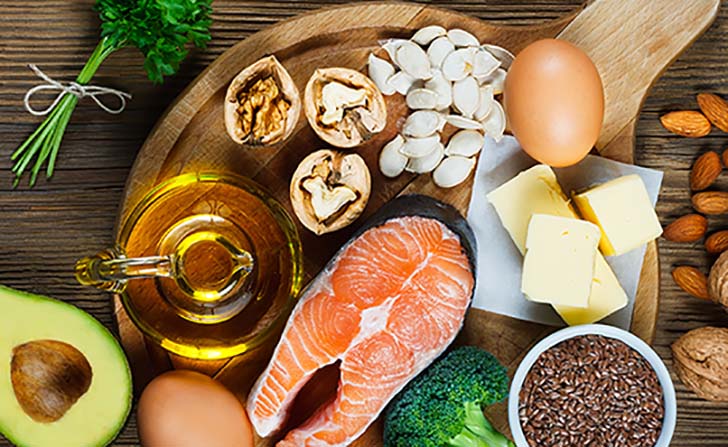Mælk
– studier, reviews, laktoseintolerance, inputs fra sund-forskning og Arla

Fra sund-forskning.dk
Her er en video fra sund-forskning ON AIR, hvor de debatterer emnet “Skal børn og voksne drikke mælk?”

Fra pubmed.com om mælk
Verification of fresh grass feeding, pasture grazing and organic farming by cows farm milk fattyacid profile.
The present study investigated the use of fatty acid (FA) profiling in combination with chemometric modelling to verify claims for cow milkin terms of fresh grass feeding, pasture grazing and organic/biodynamic farming.
Milk composition, milk fatty acid profile, digestion, and ruminal fermentation in dairy cows fed whole flaxseed and calcium salts of flaxseed oil.
Four ruminally lactating Holstein cows averaging 602+/-25 kg of body weight and 64+/-6 d in milk at the beginning of the experiment were randomly assigned to a 4 x 4 Latin square design to determine the effects of feeding whole flaxseed and calcium salts of flaxseed oil on dry matter intake, digestibility, ruminal fermentation, milk production and composition, and milk fatty acid profile.
Dairy products and inflammation: A review of the clinical evidence.
Inflammation is a major biological process regulating the interaction between organisms and the environment, including the diet. Because of the increase in chronic inflammatory diseases, and in light of the immune-regulatory properties of breastfeeding, the ability of dairy products to modulate inflammatory processes in humans is an important but unresolved issue.
Food consumption and risk of childhood asthma.
The consumption of foods rich in n-3 polyunsaturated fatty acids has been proposed to protect against childhood asthma. This study explores the association of food consumption (including cow‘s milk (CM)-free diet) in early life and the risk of atopic and non-atopic asthma.
Milk nutritional composition and its role in human health.
Dairy and milk consumption are frequently included as important elements in a healthy and balanced diet. It is the first food for mammals and provides all the necessary energy and nutrients to ensure proper growth and development, being crucial in respect to bone mass formation.
The nutritional and physiological impact of milk in human nutrition.
The nutritional value of milk as an important source of energy, high-quality protein, calcium, and riboflavin has been recognized for many years. Currently, the widespread use and promotion of milk in the U.S. as well as developing countries has been questioned. This review examines the nutrient composition of dairy products, factors that account for variability in composition of milk, milk processing, preservation, quality control, and contaminants (such as minerals, radionuclides antibiotics, microorganisms and their metabolites, herbicides, and insecticides) in milk.
Milk intake and its association with metabolic syndrome in Korean: analysis of the third Korea National Health and Nutrition Examination Survey (KNHANES III).
Although previous studies have shown that milk intake has some protective effects on metabolic syndrome (MS), there are few data on the relation between MS and milk consumption in Korean. To evaluate the association between milk intake frequency and MS, 4,890 subjects (2,052 men and 2,838 women) were included in the analysis
Is cow‘s milk harmful to a child’s health?
Discussions and debates have recently emerged on the potential positive and negative effects of cow‘s milk in the paediatric community, also under the pressure of public opinion. The negative effects of cow‘s-milk consumption seem to be limited to iron status up to 9 to 12 months; then no negative effects are observed, provided that cow‘s milk, up to a maximum daily intake of 500 mL, is adequately complemented with iron-enriched foods.
The effects of a high calcium dairy food on bone health in pre-pubertal children in New Zealand.
Childhood and adolescence is the period of most rapid skeletal growth in an individual’s lifetime. A greater peak bone mass achieved in the first 2-3 decades of life, may protect against the risk of osteoporotic fracture in later life. The aim of this randomized, controlled study was to assess in pre-pubertal boys and girls (aged 8-10 years)
Relation between milk-fat percentage, vitamin D, and BMI z score in early childhood.
Fortified cow milk is a material contributor of vitamin D and dietary fat in children. Recommendations for children >2 y of age advise reduced milk-fat consumption to reduce childhood obesity, yet the relation between lower milk fat, vitamin D stores, and body mass index (BMI) is unclear.
Health effects of cow‘s milk consumption in infants up to 3 years of age: a systematic review and meta-analysis.
To summarize the best available evidence regarding the short- and long-term health effects of cow‘s milk intake in healthy, full-term infants up to 3 years of age.
Chronic constipation as a symptom of cow milk allergy.
Twenty-seven consecutive infants (mean age, 20.6 months) with chronic “idiopathic” constipation were studied to investigate the possible relation between constipation and cow milk protein allergy (CMPA). The infants were initially observed on an unrestricted diet, and the number of stools per day was recorded.
Find evt flere artikler/forskning via dette link: http://www.greenmedinfo.com/toxic-ingredient/cow-milk
eller prøv selv at søge på pubmed.com
Arlas svar på om mælk er sundt?
Klik på billedet for at komme til deres artikel om emnet

Find deres hjemmeside her
Skriv til os
Skriv gerne til os, hvis du finder spændende forskning som du synes er relevant for os at lægge op her på siden. Du kan bruge kontaktformularen her:
[contact-form][contact-field label=”Name” type=”name” required=”1″][contact-field label=”Email” type=”email” required=”1″][contact-field label=”Message” type=”textarea”][/contact-form]






